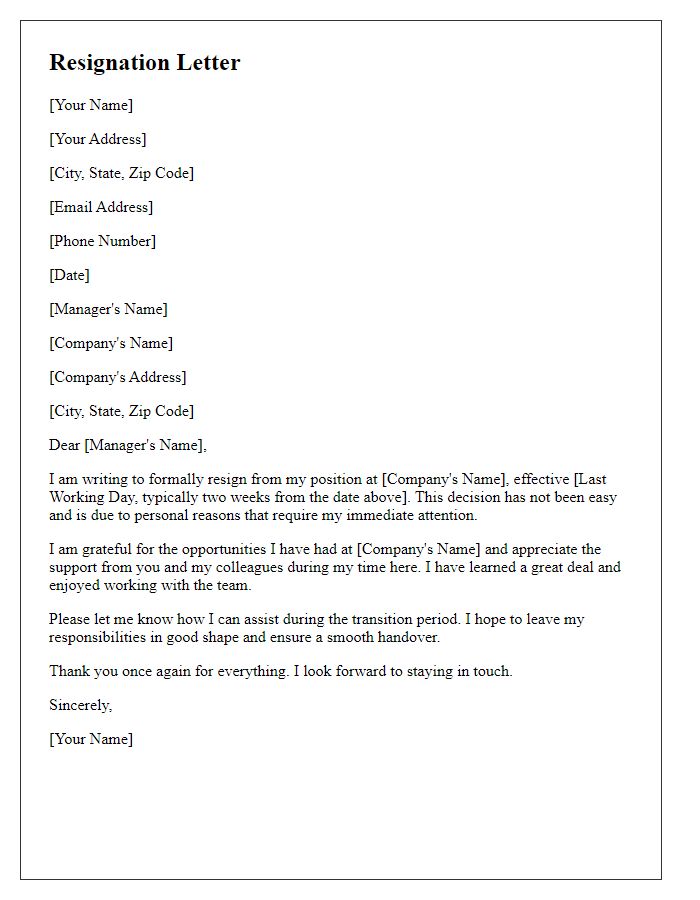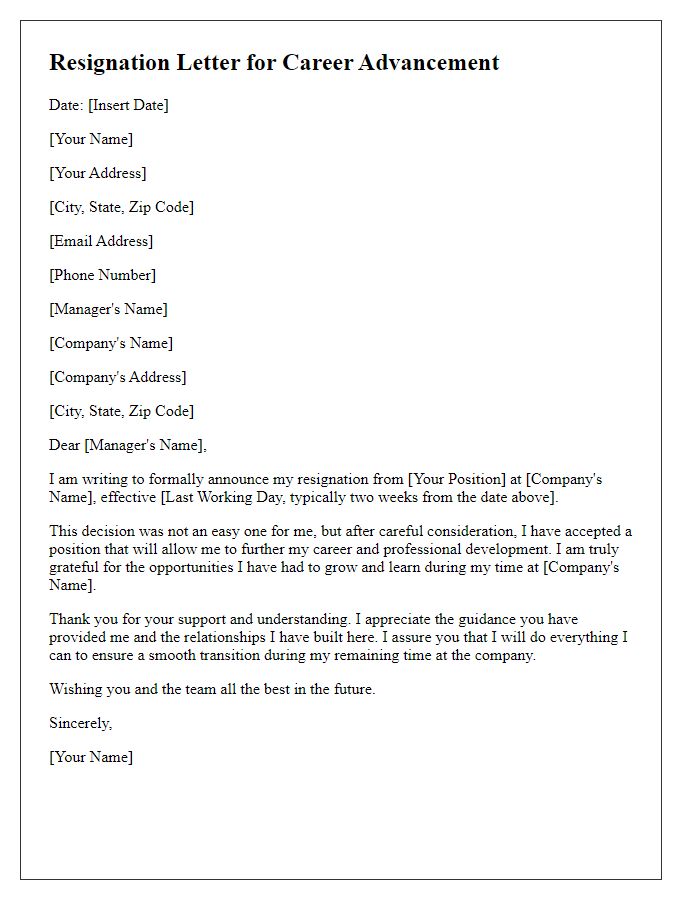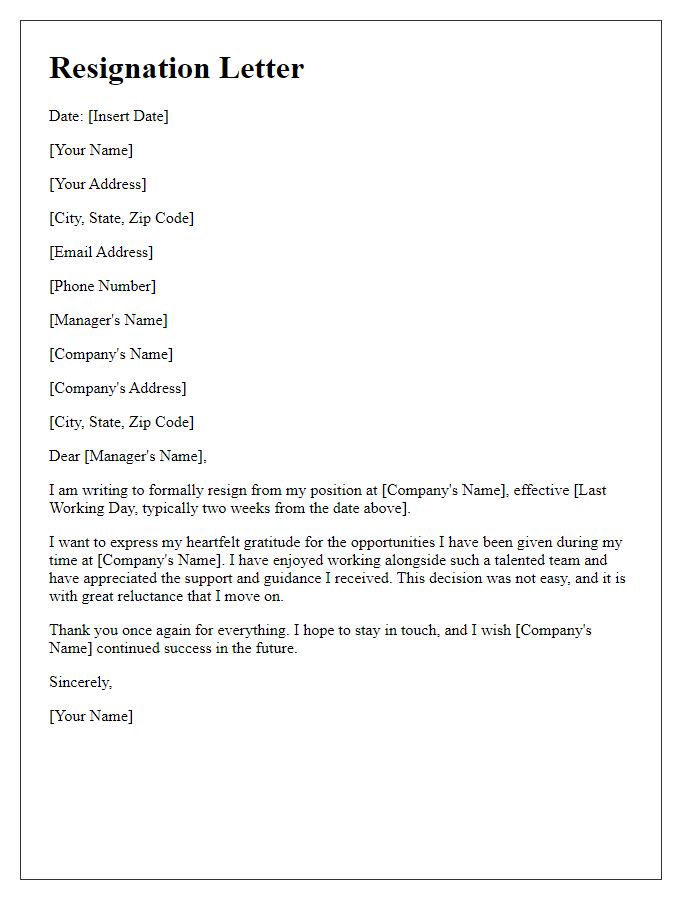Are you considering taking the next step in your career journey? Crafting a resignation notice can feel daunting, but it doesn't have to be! A well-structured resignation letter allows you to leave your current position on a positive note while maintaining professionalism. If you're unsure where to start, keep reading to discover a simple template that will guide you through the process seamlessly!

Professional tone
A resignation notice is a formal document indicating an employee's intention to leave their position. It typically includes information such as the employee's name, position, date of the notice, last working day, and a brief statement expressing gratitude for the opportunities provided. A well-crafted resignation notice should maintain a professional tone, ensuring that the employee leaves on good terms with the employer. It is often advisable to provide a notice period, usually two weeks, to allow for a smooth transition. This document serves not only as a notification but also as a record of the formal resignation process. A positive closing remark can foster goodwill and leave the door open for future networking opportunities.
Clear resignation statement
Resignation from a position often involves a formal declaration to one's employer. A resignation statement should include the intention to leave the role, the effective date of departure, and any appreciation for the opportunities provided. It typically consists of a clear announcement, such as "I am resigning from my position," followed by the last working day, commonly two weeks from the date of the letter. Expressing gratitude for experiences or relationships built during the tenure can enhance the message's tone, fostering goodwill. Additionally, offering assistance during the transition period can demonstrate professionalism and maintain positive connections.
Last working day
Submitting a resignation notice typically involves conveying important details regarding employment transitions. A resignation notice should specify the last working day, which should align with the notice period stated in the employment contract. This period commonly follows company policy, often lasting two weeks or one month, influencing the handover process and team dynamics. Communication of this intent should occur through formal documentation addressed to the immediate supervisor and human resources department, ensuring a clear understanding of the employee's departure. In preparing this notice, providing gratitude for experiences, opportunities, and professional growth acquired during the tenure can foster goodwill and positive relationships, which may be beneficial for future networking.
Gratitude and appreciation
Expressing gratitude and appreciation during a resignation creates a meaningful farewell. Acknowledging positive experiences fosters goodwill. For example, individuals might mention valuable skills gained or collaborative projects completed. Highlighting specific contributions enhances sincerity. The workplace culture, team support, and mentorship can also be recognized. Offering to assist with the transition ensures continued professionalism. This approach promotes a lasting positive relationship, encouraging future connections and references. Overall, a thoughtful resignation notice reflects respect and recognition for the opportunities provided.
Offer of transition assistance
Offering transition assistance during a resignation can significantly shape the farewell process. A well-articulated approach involves expressing gratitude for the opportunities received at the organization, notably emphasizing specific projects or experiences, such as the successful completion of the Q1 marketing campaign. Indicating a commitment to ensuring a seamless handover of responsibilities, which might include training a designated successor or documenting crucial processes, demonstrates professionalism. Highlighting a willingness to maintain open communication during the transition period reassures management and colleagues. This approach, rooted in respect and dedication, fosters positive relationships with the organization moving forward.













Comments